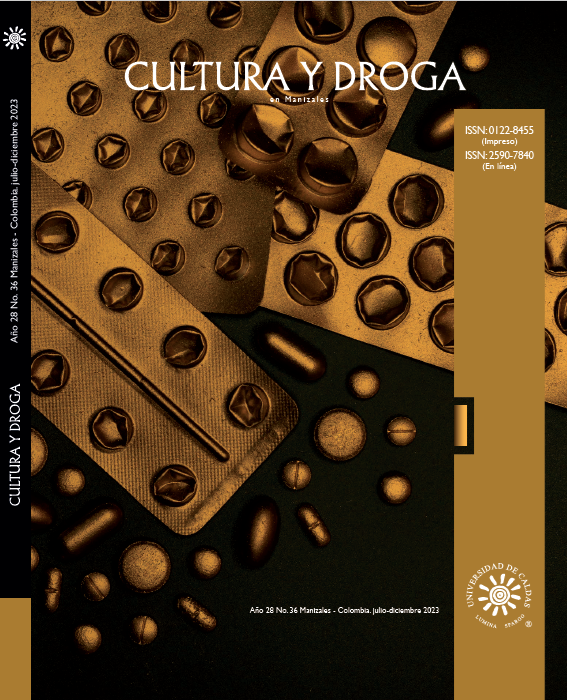Authors
Abstract
In this article, the author analyses his biographical trajectory as subject diagnosed with Attention Deficit Hyperactive Disorder (ADHD) and as a user of psychoactive drugs prescribed to treat the symptoms of his diagnosis. To do this, he considers the period that goes from his initial insertion in school life -3 years old- until his entry into university life –18 years old–. Autoethnography, a narrative method designed from the criticism of the positivist claim regarding the formation of knowledge, serves as the guiding methodological resource of this proposal. As main results, the author shows how the meanings around his behaviors begin to vary according to the spatiotemporal context in which he was located within the school and the family. The modification of the social understanding of such behaviors had the final result of their pathologization in the context of secondary education through the medical award of the diagnostic label of ADHD. In the same way, it is seen how the consumption of psychotropic drugs begin to be configured as an external disciplinary imposition on the subject to, finally, become an apparently freely arising desire. The conformation of the subjectivity of the individual, to the extent that his biographical trajectory demonstrates it, progressively ends up being more conditioned by the consumption of psychotropic drugs than by the symbolic weight of the diagnostic label. The need to carry out similar approaches that take into account delving into the results presented is concluded.
Keywords:
References
Anderson, L. (2006). Analytic Autoethnography. Journal of Contemporary Ethnography, 35(4), 373-395
Bianchi, E. (2010). La perspectiva teórico-metodológica de Foucault: Algunas notas para investigar al" ADHD". Revista Latinoamericana de Ciencias Sociales, Niñez y Juventud, 8(1), 43-65. http://www.scielo.org.co/scielo.php?script=sci_arttext&pid=S1692-715X2010000100002&lng=en&tlng=es
Blanco, M. (2012). Autoetnografía: una forma narrativa de generación de conocimientos. Andamios, 9(19), 49-74.
https://www.scielo.org.mx/pdf/anda/v9n19/v9n19a4.pdf
Canguilhem, G. (1971). Lo normal y lo patológico. Siglo XXI.
Conrad, P. (2007). The medicalization of society: On the transformation of human conditions into treatable disorders. Johns Hopkins University Press.
Cornejo, G. (2011). La guerra declarada contra el niño afeminado: Una autoetnografía "queer". Iconos. Revista de Ciencias Sociales, (39), 79-95. https://www.redalyc.org/pdf/509/50918284006.pdf
Cussianovich, A. (2010). Dificultades, retos y satisfacciones: los procesos de “normalización” de niños con TDAH en Lima (tesis de licenciatura).
Pontificia Universidad Católica de Perú.
De la Peña, F., Palacio, J. y Barragán, E. (2010). Declaración de Cartagena para el Trastorno de Déficit de Atención con Hiperactividad (TDAH):
rompiendo el estigma. Revista Ciencias de la Salud, (8), 93-98.
Deleuze, G. y Guattari, F. (2002). Mil Mesetas. Capitalismo y Esquizofrenia. PreTextos.
Douglas, M. (1983). How Institutions Think. Syracuse University Press.
Ellis, C., Adams, T.E. y Bochner, A.P. (2011). Autoethnography: an overview.Historical social research/Historische sozialforschung, 273-290.
https://www.jstor.org/stable/23032294
Filipe, A.M. (2016). Making ADHD Evident: Data, Practices, and Diagnostic Protocols in Portugal. Medical Anthropology, 35(5), 390-403.
https://doi.org/10.1080/01459740.2015.1101102
Foucault, M. (2009). Vigilar y castigar: nacimiento de la prisión. Siglo XXI.
Foucault, M. (1988). Technologies of the self. En Martin, L., Gutman, H. y Huttonm,P. (Eds.). Technologies of the Self. A seminar with Michel Foucault (pp. 16-49).The University of Massachusetts Press.
Fricker, M. (2007). Epistemic injustice: power and the ethics of knowing. Oxford University Press.
Gariglio, L. y Ellis, C. (2018). «Good ethnography is autoethnographic, and good autoethnography is ethnographic». A dialogue with Carolyn Ellis. Rassegna Italiana di Sociologia, 59(3), 555-580. DOI:10.1423/91084
Goffman, E. (2021). Estigma: La identidad deteriorada. Amorrortu.
Hacking, I. (1998). Mad Travellers: Reflections on the Reality of Transient Illnesses.University Press of Virginia.
Hoben, J. y Hesson, J. (2021). Invisible lives: Using autoethnography to explore the experiences of academics living with attention deficit hyperactivity disorder (ADHD). New Horizons in Adult Education and Human Resource Development,33(1), 37-50.
Jutel, A. y Nettleton, S. (2011). Towards a sociology of diagnosis: Reflections and opportunities. Social Science & Medicine, 73(6) 793-800.
doi: 10.1016/j.socscimed.2011.07.014
Ing, C. y Mills, J.P. (2017). “Hey, look at me”: An {auto}ethnographic account of experiencing ADHD symptoms within sport. Qualitative Research in Sport, Exercise and Health, 1-10. doi:10.1080/2159676x.2017.1405362
Iriart, C. (2008). Capital financiero versus complejo médico-industrial: los desafíos de las agencias regulatorias. Cienc. Saude Colet., 13(5), 1619-1626.
Latour, B. y Wooglar, S. (2013). Laboratory Life. The Construction of Scientific Facts. Princeton University Press.
Leavy, P. (2013). "¿Trastorno o mala educación?" Reflexiones desde la antropología de la niñez sobre un caso de TDAH en el ámbito escolar.
Revista Latinoamericana de Ciencias Sociales, Niñez y Juventud, 11(2), 675-688. doi:10.11600/1692715x.11215101012
Metzger, A.N. y Hamilton, L.T. (2021). The stigma of ADHD: teacher ratings of labeled students. Sociological Perspectives, 64(2), 258-279.
Preciado, P.B. (2008). Testo Yonqui. Espasa Calpe.
Rafalovich, A. (2005) Exploring clinician uncertainty in the diagnosis and treatment of attention deficit hyperactivity disorder. Sociology of
Health & Illness, 27, 305-23. doi: 10.1111/j.1467-9566.2005.00444.x
Rassoul, R. (2021). A Life of Ambivalence: Exploring ADHD through Autoethnography (tesis doctoral). American University of Lebanon.
Rodas-Gómez, A.M. (2021). Reflexiones autoetnográficas sobre el uso de heroína en Colombia y su relación con los mundos delictivos. Revista Cultura y Droga, 26(32), 137-151. https://doi.org/10.17151/culdr.2021.26.32.7
Rose, N. (2012). Políticas de la vida. Biomedicina, poder y subjetividad en el siglo XXI. UNIPE.
Strand, M. (2011). Where do classifications come from? The DSM-III, the transformation of American psychiatry, and the problem of origins in the sociology of knowledge. Theory and Society, 40(3), 273-313. https://doi.org/10.1007/s11186-011-9142-8
Wall, S. (2006). An Autoethnography on Learning about Autoethnography.International Journal of Qualitative Methods, 5(2), 146-160.
doi:10.1177/160940690600500205
Wall, S. (2016). Toward a moderate autoethnography. International Journal of Qualitative Methods, 15(1), 1-9.

 PDF (Español)
PDF (Español)
 FLIP
FLIP
 Perfil Google Scholar
Perfil Google Scholar





















